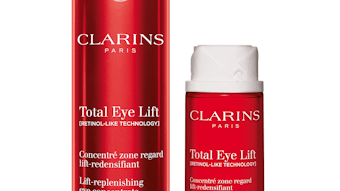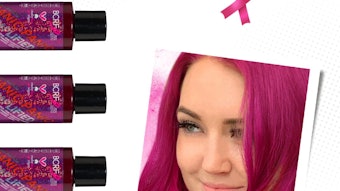Cosmetics and personal care companies often utilize a wide variety of packaging types to represent and differentiate their brands. In order to protect brands and increase supply chain control, personal care packaging codes are required on nearly every kind of packaging. The right coding and marking technology can make a significant difference in the product appearance and, ultimately, affect the company’s brand position. With so many coding and marking options available to brand owners, it may be hard to determine which technology might be the best fit for their needs. Those looking to uncover the best solution for their products should take these three important steps: evaluate needs, determine the best options and run sample tests.
Step 1: Initial Assessment
It is important to think about why coding is necessary for the intended products and define the coding requirements, such as high contrast or smudge-resistant codes. Asking the following questions can help pinpoint exactly what kind of code is needed:
Should the code stand out?
While high contrast codes can make it easier for the consumer to find a code, not all products require prominent coding for consumer attention. Some brands actually require low contrast for certain codes so they do not detract from the brand image. For example, makers of a neutral-colored lotion in plastic bottles may want the expiration date to appear only slightly darker than the bottles when filled.
Will the code rub off?
Personal care products often contain oily or cleansing ingredients that may smudge or remove certain ink codes. Additionally, some of these products are used in wet environments, which can erode some codes over time. Cleaning supplies and nail polish remover can often remove most ink-based codes. With these products, a good alternative to ink codes is often the permanent codes produced by lasers. Permanent codes can address these challenges and help protect customers and the brand.
Where should the code be located?
Often overlooked, code placement can impact both contrast and permanence of a code. Coding on a label instead of directly onto a plastic bottle or container might increase code contrast and permanence.
Step 2 Weeding Through the Options
To determine which solution would work best on a chosen product, it is important to understand the various coding and marking technologies and what they are designed for. Each technology provides different benefits to be evaluated based on the goals that the company has previously established.
Continuous Ink Jet (CIJ): It is a versatile ink-based, non-contact coding solution that can print on nearly any package type or shape, making it ideal for high-speed lines and curved surfaces. With specialized inks, continuous ink jet printers create durable, long-lasting codes. The solution is considered a reliable and cost effective coding method that can seamlessly integrate into most packaging lines.
Laser Marking: Laser marking solutions create permanent codes directly on the product or label, enabling brand protection and helping to prevent counterfeiting. Engraving and color change options can enhance a package’s design. Since lasers don’t operate with inks or solvents, companies can save on consumable costs. This coding method is often used for products used in wet environments.
Thermal Ink Jet (TIJ): The thermal ink jet coding solution is a cartridge-based, ink jet printing method that is capable of printing at high resolutions, up to 600 dpi. This easy-to-use technology is designed to print clear, high-quality text and bar codes. With no wear parts, costly maintenance is avoided when integrating thermal ink jet printers into primary and secondary packaging lines.
Thermal Transfer Overprinting (TTO): This coding method heats up small resistors in a printhead to melt specific areas of an inked ribbon and print directly onto flexible packaging. It provides high resolution, real-time codes that are perfect for labels, plastic sleeves and other flexible packaging applications. Many ribbon ink colors are available with this technology.
Large Character Marking (LCM): Large character ink jet printers produce high resolution ink-based, non-contact printing on porous and case coding materials. Brand owners can often replace pre-printed boxes and labels with this highly flexible, cost-effective printing solution.
Label Printer Applicator: Employing thermal printing technology for high resolution bar codes and text, these systems print and place labels on cartons, cases and pallets.
Addressing Packaging Demands
Over 80% of cosmetic/personal care bottles, jars and containers are made from either high-density polyethylene (HDPE) or polyethylene terephthalate (PET) plastic. These kinds of materials may contain slick additives and plasticizers that may make it difficult for inks to adhere on the product. Code contrast and resilience should be considered when looking to code products packaged in HDPE or PET.
Continuous ink jet printers can provide excellent contrast and adhesion when printing on the irregular shapes usually associated with this type of packaging. Laser marking is also an option with its ability to create permanent codes either directly on the plastic or a label—without running or smudging in wet environments. Both of these technologies also work well for coding on metal aerosol cans.
Matching Packing Applications, Weighing Your Options
Flexible plastic packaging like pouches, sleeves and bags can be printed with product information, bar codes, logos and other variable information during the packaging process. The range of effective technologies includes TIJ, TTO, Laser Marking systems and CIJ. TTO is often a desired solution, as it can be used for high resolution printing with no solvents and no mess on flexible films.
CIJ printers and lasers are most often used to code directly onto glass bottles and jars with pre-applied labels. Both CIJ and lasers can code small or hard-to-reach areas because they are non-contact technologies and only need to be near the surface to mark it.
TTO and TIJ are also options for labels. Both technologies can print product information in-line onto a label prior to placement on glass and other substrates.
Folding carton applications often require sharp and clean codes—or those that are inconspicuous. Lasers, CIJ printers and TIJ printers all offer coding options that do not detract from the brand image.
For more flexible manufacturing and increased savings, companies are opting to use various technologies to directly code on cases. This helps eliminate the need for pre-printed packaging while allowing for customization. Case coding applications require information to be legible and accurate to achieve optimal supply chain performance. Large character marking systems are most commonly selected for printing on corrugate cases. Meanwhile, thermal ink jet printers may also provide the quality codes needed for this type of packaging. Finally, special treatments on the cases can allow lasers to provide sharp codes.
An investigation of substrate compatibility and speed requirements should be performed for these technologies.
Even with all the packaging types listed above, there are companies that use specialty packaging of various sizes, shapes and materials to accommodate their products and to differentiate their brand. Due to their versatility, laser marking systems and continuous ink jet printers are typically recommended to mark and code directly onto uniquely shaped product packaging. CIJ solutions are often the best choice for applications with substrate irregularities such as height variations or waviness.
Step 3 Test the Best
Due to the variability in packaging types, shapes and colors, it is important to test the selected technology to make sure it is a good fit on the packaging line. Once the coding and marking options have been narrowed down to the appropriate technology, sample tests should be conducted to verify that the selected solution will in fact meet the coding needs in terms of contrast, permanence and placement.
Testing equipment on a company’s packaging line is an excellent way to obtain accurate results. An established coding and marking vendor can provide this testing and support for the many coding challenges faced by personal care companies.
Taking the time to assess available coding options and working with a reliable vendor will help ensure the best coding solution fit—with an eye on increased profitability, uptime and brand protection.
Lindsay Galas is the global marketing manager for Videojet Technologies.









